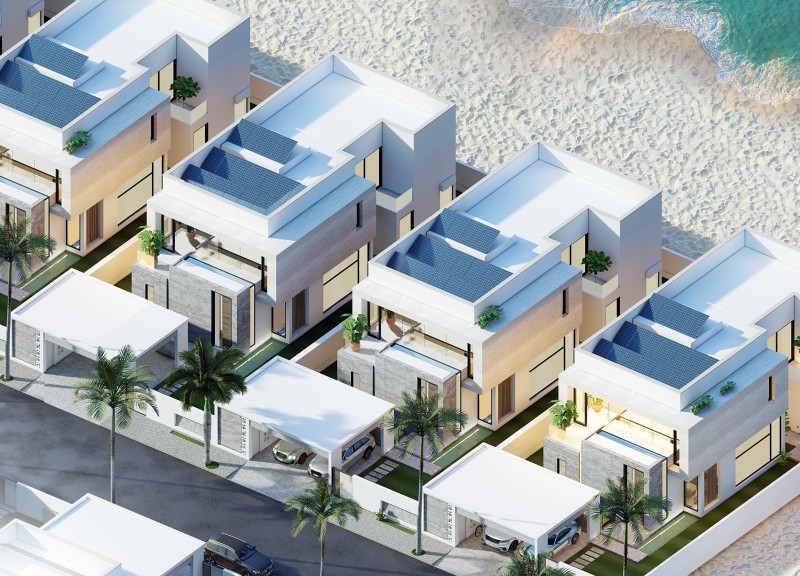5 key facts about this project
The design embodies a seamless integration with its surroundings, showcasing how architecture can reflect and enhance the natural landscape. This approach is evident in the choice of materials and the overall form of the building, which draws inspiration from local architectural traditions, blended with modern techniques. The resulting structure stands as a testament to both the past and present, illustrating a dialogue between history and innovation.
Functionally, this project serves as a multi-purpose space, designed to accommodate various activities that cater to both individual and community needs. This versatility is reflected in the layout, which combines open areas for social interaction with more intimate spaces for relaxation and focus. The thoughtful arrangement of these spaces fosters a sense of community while allowing for privacy and personal reflection when needed.
Key details in the architecture, such as large windows and expansive balconies, enhance the connection between the interior and exterior. This design choice not only allows for ample natural light to flood the interior but also provides breathtaking views of the surrounding environment, further blurring the lines between indoors and outdoors. The incorporation of landscaped terraces and green roofs adds to the environmental consciousness of the project, promoting biodiversity and encouraging a sustainable lifestyle.
In terms of materiality, the project embraces a selection of natural and local materials, including sustainably sourced timber, stone, and glass. These materials not only ensure durability but also harmonize with the local context and climate, further solidifying the building's eco-friendly credentials. The careful selection of these materials demonstrates an awareness of the environment's demands while resonating with the aesthetic sensibilities of the community.
Unique design approaches are evident throughout the structure, such as the innovative use of passive solar design principles, which maximize energy efficiency and minimize the building's carbon footprint. This architectural strategy not only supports the occupants’ comfort but also aligns with global sustainability goals. The project exemplifies how thoughtful design can lead to reduced energy consumption and lower maintenance costs while providing a high standard of living.
Furthermore, the architectural plans detail intricate design elements that contribute to both the functional and visual aspects of the project. Features such as custom cabinetry, integrated lighting solutions, and flexible space configurations are meticulously detailed in the architectural sections. These elements accentuate the project's commitment to user experience, ensuring that all aspects of the design serve a purpose aligned with the residents' lifestyle.
As a whole, the architectural design encapsulates a forward-thinking vision that is at once contemporary and rooted in its context. It challenges conventional design norms by embracing a more holistic view of architecture, where sustainability and livability are paramount. The project is not merely a structure; it is a dynamic environment where residents can thrive in harmony with nature.
To gain a deeper understanding of the project, readers are encouraged to explore its comprehensive architectural plans and sections. This will provide further insights into the nuanced design decisions that support the project's overarching themes of functionality, community engagement, and sustainability. The architectural ideas presented here serve as a valuable reference point for those interested in the intersection of modern architecture and environmental stewardship.


 Faizan Tariq
Faizan Tariq 























